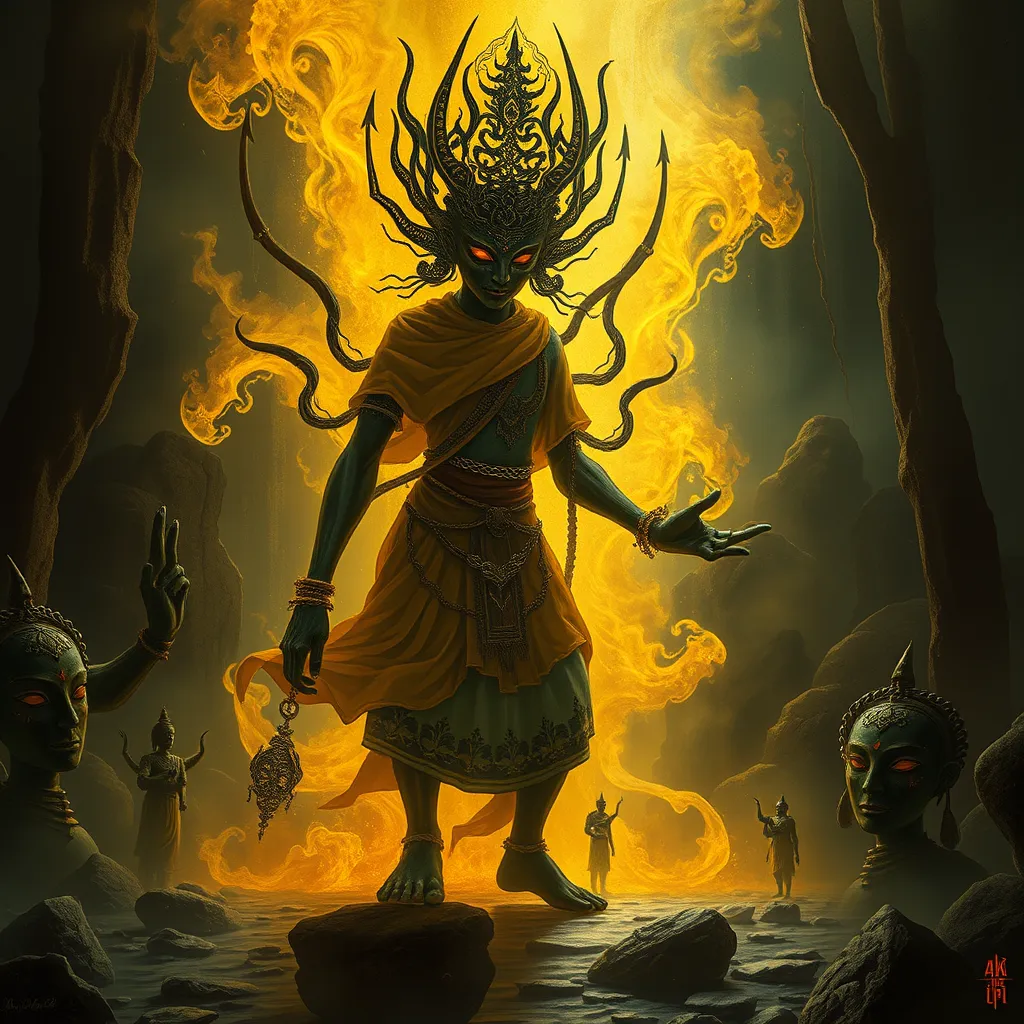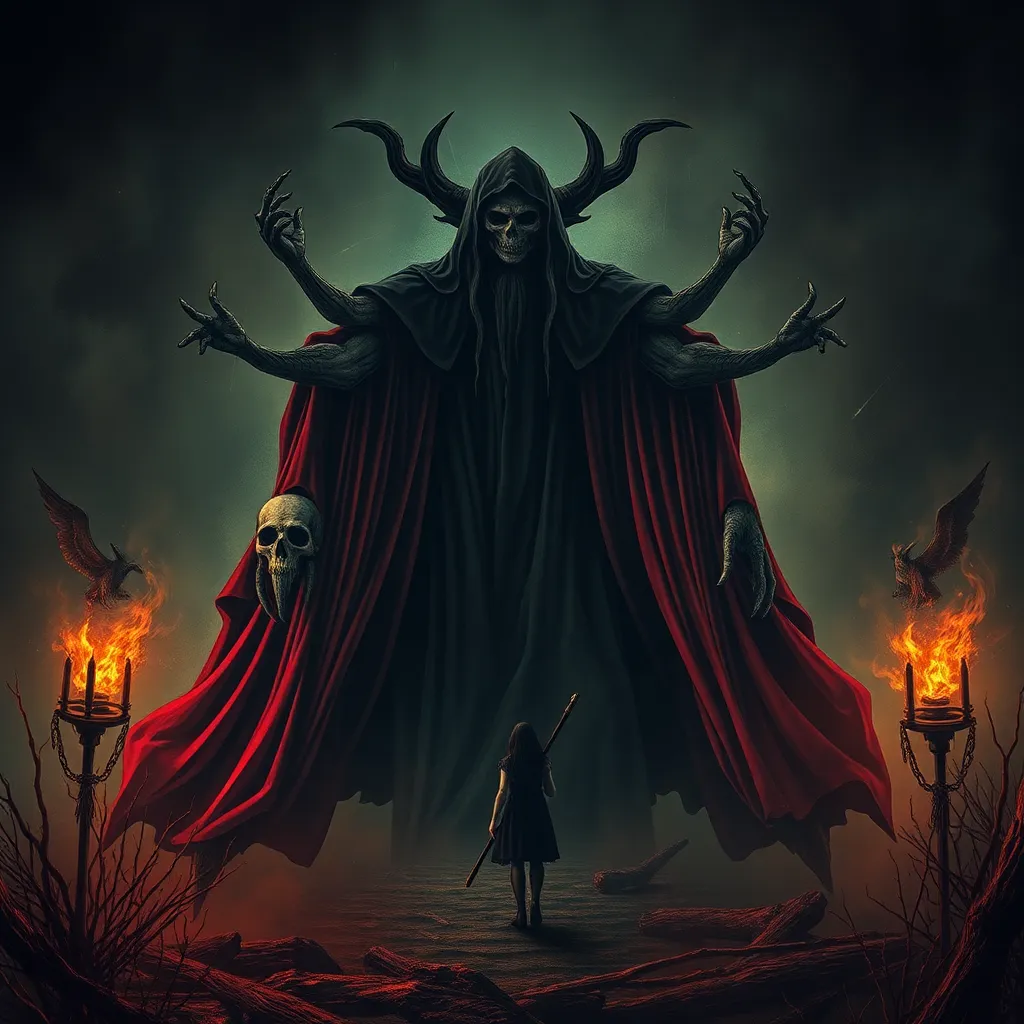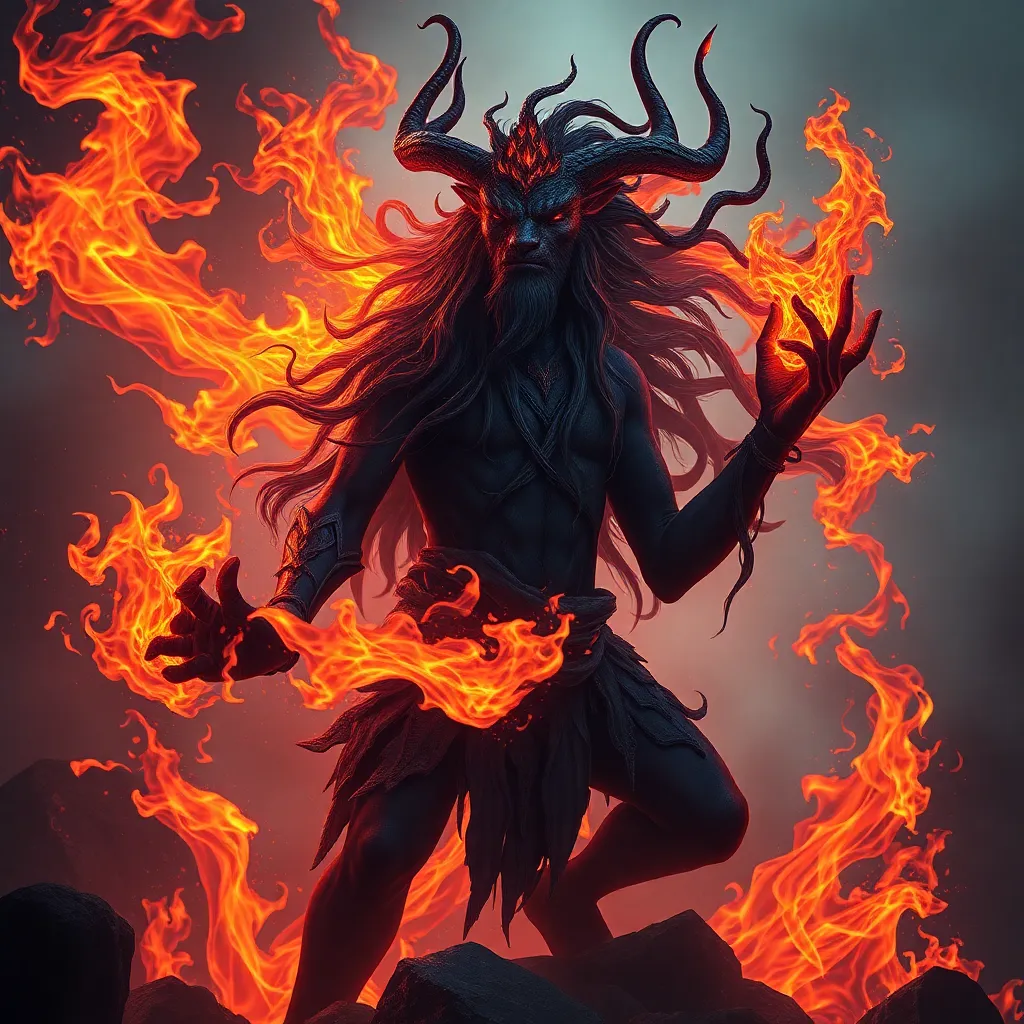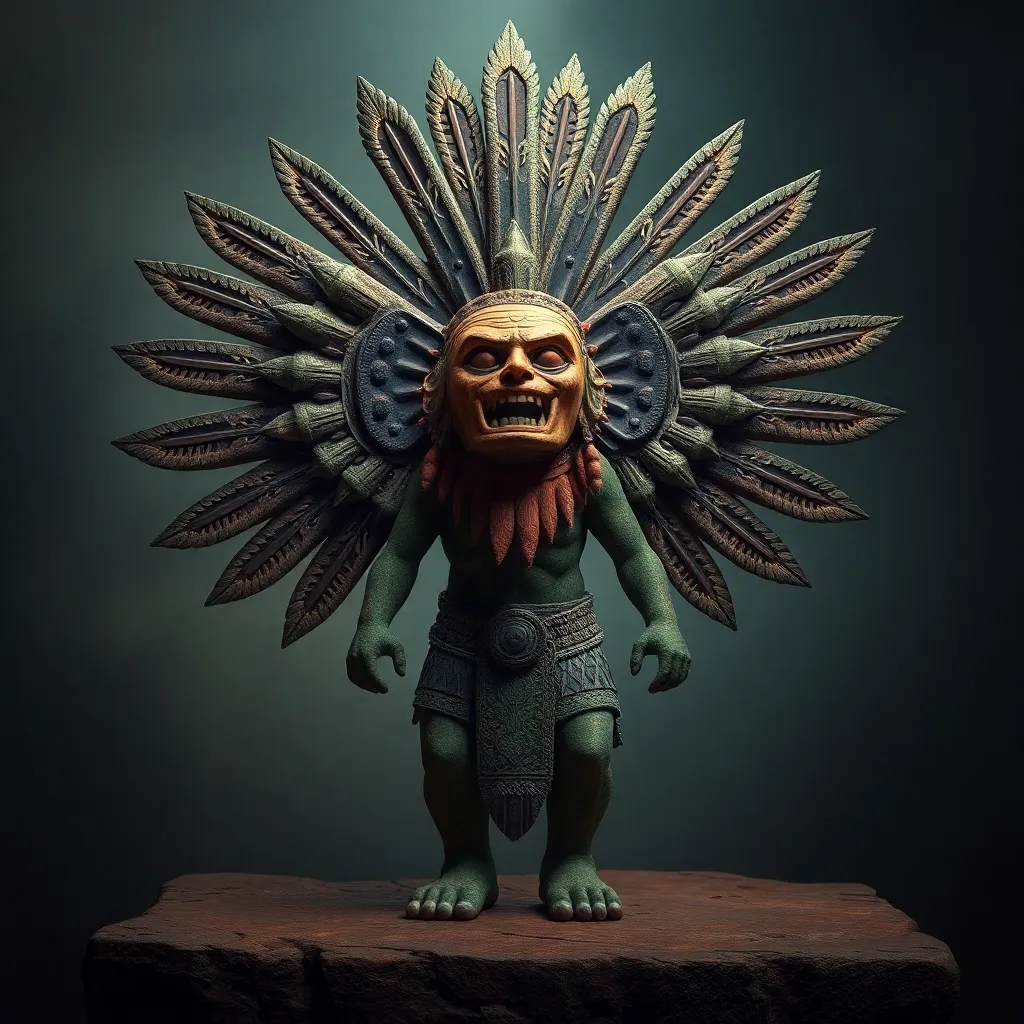The Rakshasa in Burmese Folklore: The Shadowy Beings of the Land of Gold
I. Introduction
Burmese folklore is a rich tapestry woven with myths, legends, and tales that reflect the beliefs and values of the Burmese people. It serves as a vital component of cultural identity, providing insights into the spiritual and moral fabric of society. Among the many mythical beings that inhabit this folklore, the Rakshasa stands out as a particularly fascinating figure.
Rakshasa, originating from ancient Indian mythology, are depicted as supernatural beings with the power to shape-shift and control various elements. While they are commonly associated with malevolence, the portrayal of Rakshasa can vary widely, reflecting different cultural interpretations. This article aims to explore the origins, characteristics, and cultural significance of Rakshasa in Burmese folklore, as well as their modern representations and influences.
II. Origins of the Rakshasa
The historical roots of Rakshasa can be traced back to Indian mythology, where they are often depicted as fearsome creatures opposed to the gods. Their earliest mentions can be found in ancient texts such as the Vedas and the epics of the Mahabharata and the Ramayana. Over centuries, these beings have evolved, adapting to the cultural contexts of the regions they spread to, including Burma.
In Burmese culture, Rakshasa have been integrated into local beliefs, taking on characteristics that resonate with indigenous narratives. This adaptation has been influenced by the exchange of ideas through trade, conquest, and cultural diffusion across Southeast Asia. Key texts such as the “Jataka” stories highlight the interactions between humans and Rakshasa, showcasing their dual nature as both protectors and tormentors.
III. Characteristics of Rakshasa
Rakshasa are often characterized by their formidable and grotesque physical appearances. They are described as having:
- Large, terrifying bodies
- Multiple limbs or heads
- Sharp claws and fangs
- Glowing eyes that can be mesmerizing or frightening
In terms of abilities, Rakshasa are known for their:
- Shape-shifting powers, allowing them to disguise themselves as humans or animals
- Supernatural strength and speed
- Control over darkness and illusions
- Ability to cast spells or curses
Despite their fearsome reputation, there are varieties of Rakshasa in folklore. Some are depicted as benevolent beings who protect communities, while others embody pure malevolence, preying on the weak and unsuspecting. This duality reflects the complexities of human nature and morality.
IV. Rakshasa in Burmese Legends and Tales
Burmese legends are rich with tales of Rakshasa, presenting them in various roles that highlight their significance in moral storytelling. One prominent story features a Rakshasa who, after being outsmarted by a clever hero, transforms into a helpful spirit, teaching the importance of wisdom and cunning over brute strength.
In many cautionary tales, Rakshasa serve as warnings against hubris and moral failing. Their encounters with humans often lead to lessons about humility, respect, and the consequences of one’s actions. These stories are not merely for entertainment; they play a crucial role in shaping social values and local beliefs.
V. Cultural Significance of Rakshasa
Rakshasa have left a significant mark on Burmese art, literature, and performance. They often appear in:
- Traditional puppet shows, where their dramatic nature captivates audiences
- Literary works that explore themes of good versus evil
- Paintings and sculptures that depict their fearsome forms
The symbolism of Rakshasa in Burmese culture is profound. They represent the struggle between light and darkness, good and evil, and the complexities of human nature. Comparatively, similar entities can be found in Southeast Asian folklore, such as the “Asura” in Hindu mythology and “Hantu” in Malay folklore, showcasing shared themes and cultural exchanges across the region.
VI. Modern Interpretations and Representations
In contemporary media, Rakshasa have been reimagined in various ways, from films and television series to literature. These modern portrayals often emphasize their shape-shifting abilities and moral ambiguity, appealing to audiences’ fascination with the supernatural.
The influence of globalization has also affected perceptions of Rakshasa, as they are increasingly portrayed in Western media, sometimes losing their cultural specificity. However, this exposure has sparked a resurgence of interest in traditional folklore, prompting younger generations to revisit and celebrate their cultural heritage.
VII. Rakshasa in Rituals and Beliefs
Rakshasa are not just figures of folklore; they play a role in the spiritual practices of the Burmese people. Traditional beliefs often include rituals designed to appease or ward off these beings. Common practices include:
- Offering food or prayers at local shrines
- Performing cleansing rituals to remove negative influences
- Reciting mantras believed to protect against malevolent Rakshasa
These rituals reflect a deep-seated belief in the interconnectedness of the spiritual and physical worlds, emphasizing the importance of respect and reverence for these shadowy beings.
VIII. Conclusion
The significance of Rakshasa in Burmese folklore is a testament to the rich cultural heritage of the region. They embody the complexities of human nature and serve as both cautionary figures and sources of moral lessons. As modern culture evolves, the legacy of Rakshasa continues to influence and inspire, reminding us of the importance of preserving these traditional stories and beliefs.
In conclusion, understanding the role of Rakshasa in Burmese folklore not only enriches our appreciation of this unique culture but also highlights the universal themes of good versus evil, the supernatural, and the moral lessons that transcend time and geography.



